Whether you're a spice-savvy home cook or a curious culinary explorer, if the word fajitas beef makes your taste buds tingle, you've come to the right place. In this article, we’re diving deep into the sizzling world of fajitas — not just how to make them, but how to truly elevate them using the magic of spices and techniques that separate the amateurs from the flavor pros.
- Why Fajitas Beef is a Flavor Icon
- Spice Basics: The Essential Flavors Behind Great Fajitas
- Tip #1: Choose the Right Cut for Maximum Flavor
- Tip #2: Marinate Like a Pro
- Tip #3: Toast Those Spices for Deeper Depth
- Tip #4: Balance Heat and Smoke with Precision
- Tip #5: Layering Herbs for Complexity
- Tip #6: Don't Skip the Acidic Kick
- Tip #7: Sear It Right for That Signature Char
- Buying Guide: Best Spices and Tools for Fajitas Beef
- Conclusion: Master Your Meat and Make Every Bite Sing
- Frequently Asked Questions
Why Fajitas Beef is a Flavor Icon
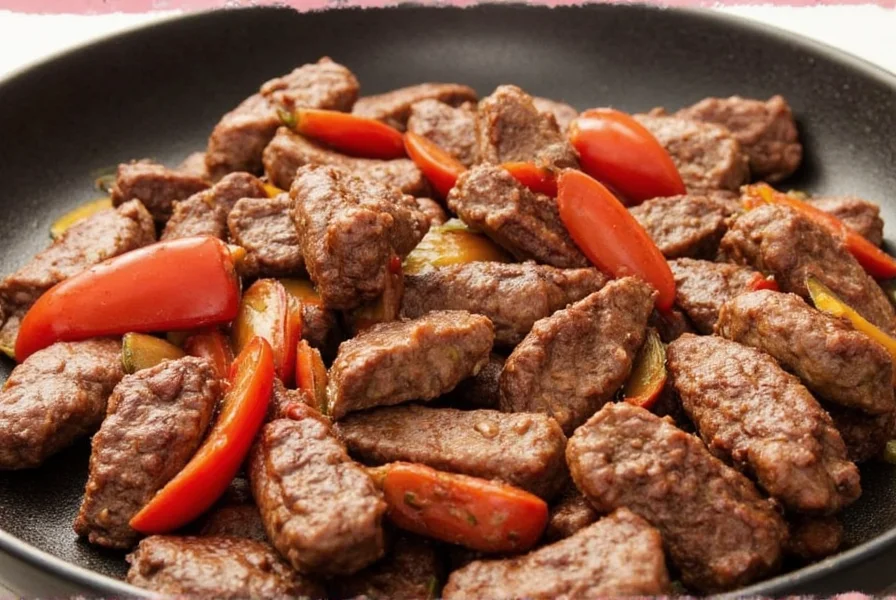
The story of fajitas begins in the heart of Texas, where ranch hands turned humble skirt steak into something legendary. Today, fajitas beef is synonymous with bold flavors, vibrant colors, and that unmistakable aroma of seared meat hitting a hot skillet.
But here's the thing — even the best cuts can fall flat without the right spices and technique. That's why understanding the role of spice isn't just about heat; it's about layering depth, complexity, and character into every bite.
Spice Basics: The Essential Flavors Behind Great Fajitas
Fajitas beef is more than just a Mexican dish — it's a flavor orchestra. Let's break down the core ingredients of a classic fajitas spice blend:
| Spice/Ingredient | Flavor Profile | Role in Fajitas |
|---|---|---|
| Chili Powder | Earthy, smoky, slightly spicy | Base of heat and color |
| Cumin | Earthy, nutty, warm | Adds backbone and depth |
| Paprika | Mildly sweet, smoky | Color boost and subtle sweetness |
| Garlic Powder | Strong, savory, umami-rich | Essential aromatic layer |
| Onion Powder | Sweet, pungent | Balances sharpness and adds body |
| Oregano (Mexican preferred) | Elegant, herbal, earthy | Lifts the flavor profile |
| Salt & Pepper | Universal enhancer, balances | Foundation of seasoning |
This combination is the holy grail of any good fajitas marinade or rub. But like all great spice blends, the devil's in the details — and that's exactly what we'll explore next.
Tip #1: Choose the Right Cut for Maximum Flavor
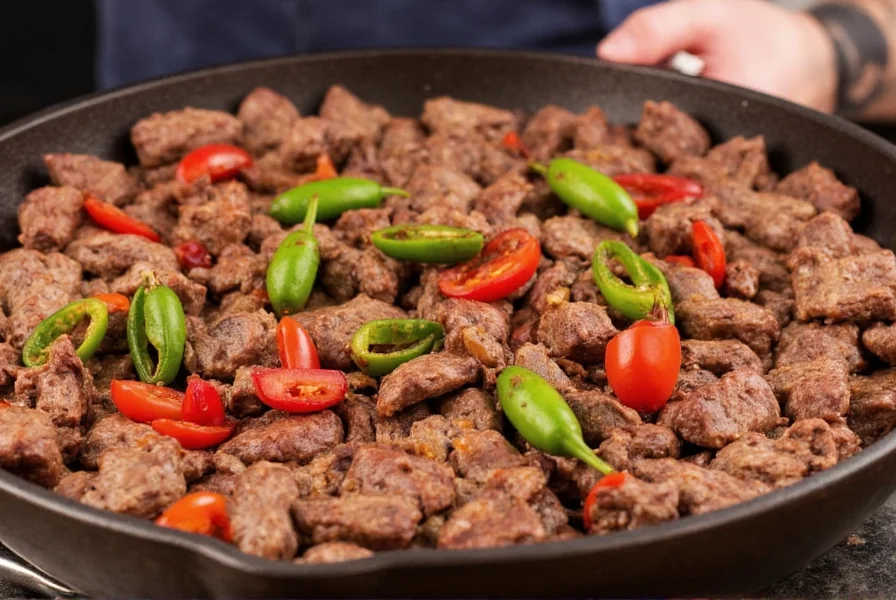
Skirt steak is the traditional choice, known for its rich marbling and absorbent texture. But if you can't find it, consider these alternatives:
- Flank Steak: Leaner but still flavorful; just don't overcook!
- Flat Iron Steak: Tender and easy to slice thinly
- Hanger Steak: Rich in flavor, often called the "butcher's cut"
Pro Tip: Look for cuts labeled as "marinade-ready" or "fajita-cut" at the butcher shop or supermarket.
Tip #2: Marinate Like a Pro
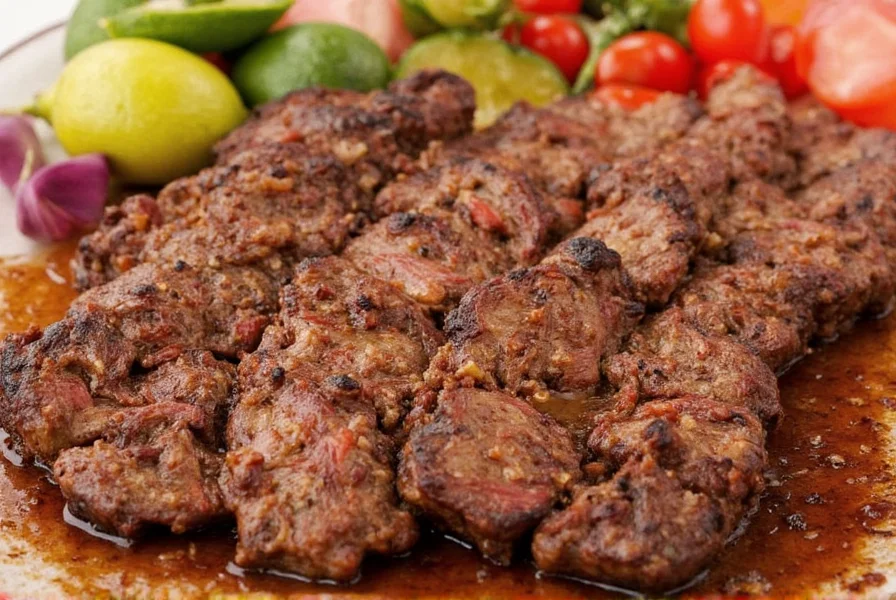
Marination isn't just about flavor — it's also about tenderness. Here's a quick recipe for a basic fajitas beef marinade:
- 2 tbsp chili powder
- 1 tbsp cumin
- 1 tsp smoked paprika
- 1 tsp garlic powder
- 1 tsp onion powder
- ½ tsp oregano
- 1 tbsp olive oil
- Juice of 1 lime
- 1 tbsp soy sauce or Worcestershire sauce (optional)
Toss your sliced beef in the mix and let it rest in the fridge for at least 30 minutes — or better yet, overnight. This gives the spices time to penetrate the meat fibers, resulting in richer flavor and better texture.
Tip #3: Toast Those Spices for Deeper Depth
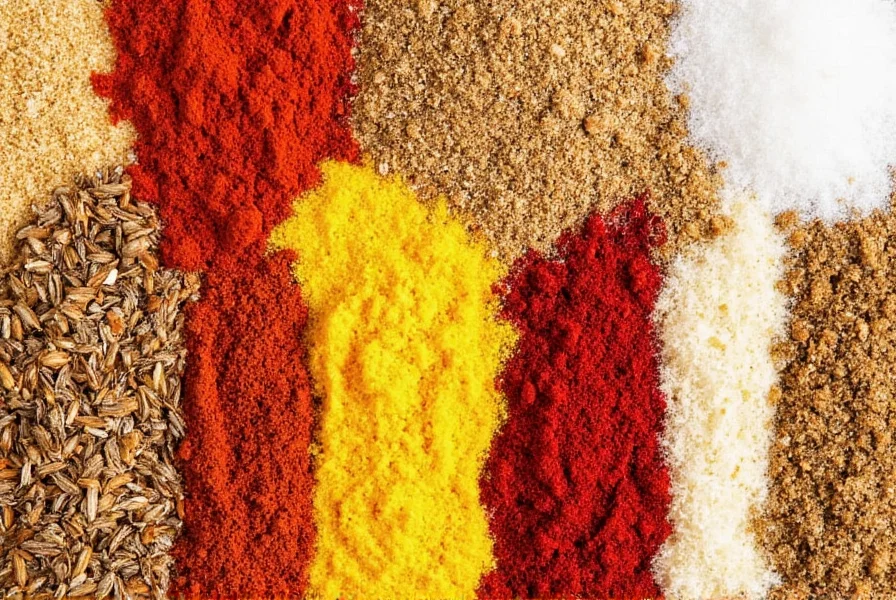
If you want restaurant-quality flavor at home, toast your spices before applying them to the meat. Simply heat a dry skillet over medium heat and add whole spices like cumin seeds, coriander, or peppercorns.
Toasting unlocks essential oils and intensifies flavor. Once fragrant (about 1–2 minutes), grind them using a spice grinder or mortar and pestle. Mix into your marinade or rub for an extra layer of warmth and complexity.
Tip #4: Balance Heat and Smoke with Precision
One of the most common mistakes when seasoning fajitas beef is overpowering the natural taste of the meat with too much chili. Remember: spice should enhance, not overwhelm.
| Chili Type | Heat Level (SHU) | Best For |
|---|---|---|
| Ancho (dried poblano) | 1,000 – 2,000 | Deep red color, mild to moderate heat |
| Guajillo | 2,500 – 5,000 | Bright, fruity notes |
| Pasilla | 1,000 – 2,500 | Raisiny flavor, ideal for darker sauces |
| Chipotle (smoked jalapeño) | 5,000 – 10,000 | Smoky kick, perfect for grilled dishes |
You can blend dried chilies with water or stock to create a paste and mix into your marinade for a deeper, more complex flavor. Start mild and adjust up — you can always add more spice later!
Tip #5: Layering Herbs for Complexity
While most people reach for the standard cumin-chili combo, don't overlook fresh or dried herbs that can take your fajitas beef from good to unforgettable.
- Mexican Oregano: Earthier and more floral than Mediterranean oregano — indispensable in Tex-Mex cuisine
- Cilantro: Add chopped cilantro to the marinade or sprinkle over finished fajitas for brightness
- Epazote: An underappreciated herb with a citrus-pine flavor, commonly used in central Mexico
Tip #6: Don't Skip the Acidic Kick
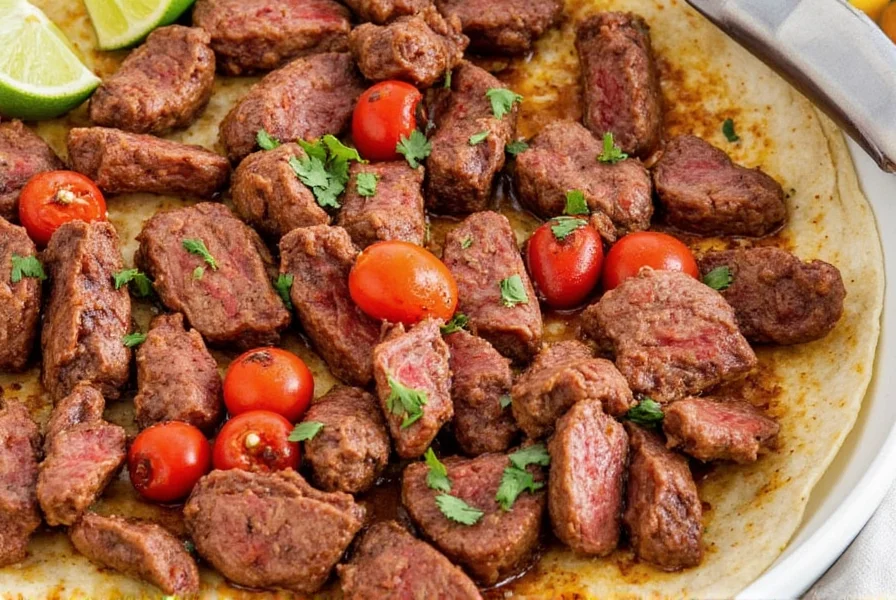
A splash of acidity does wonders for cutting through richness and balancing out the earthiness of the spices. Lime juice is the go-to, but you can also experiment with:
- Vinegar (apple cider or white wine vinegar)
- Orange juice
- Yogurt or sour cream (for creamy marinades)
Add acid during marination or drizzle after cooking for that refreshing contrast that brings everything together.
Tip #7: Sear It Right for That Signature Char
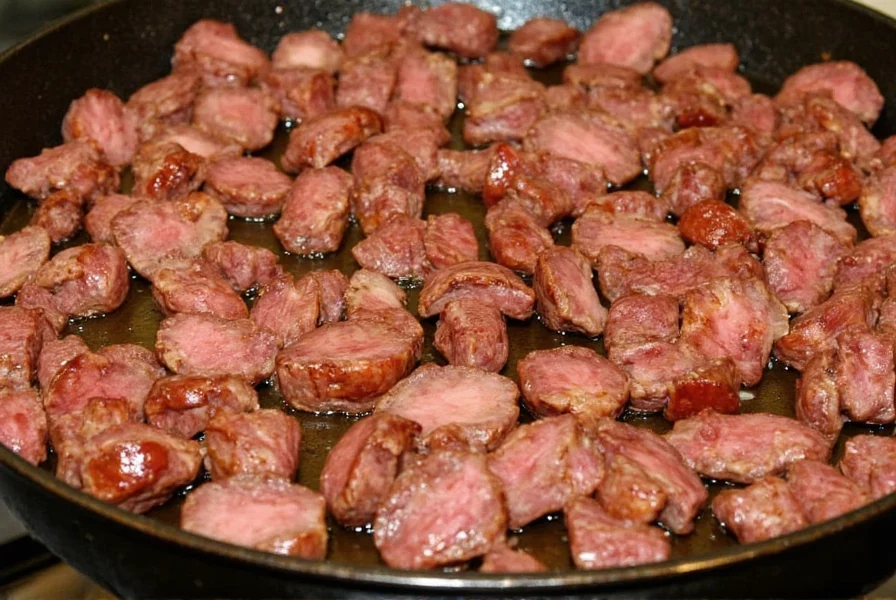
The final step — and arguably the most important — is the sear. A properly seared piece of fajitas beef will develop a beautiful crust, locking in juices and amplifying flavor through Maillard reaction.
Here's how to do it right:
- Preheat your cast iron skillet until it's smoking hot.
- Dry off excess marinade with paper towels to prevent steaming.
- Don't overcrowd the pan — work in batches if needed.
- Sear each side for 1–2 minutes, until caramelized edges appear.
- Remove from heat and let rest for a few minutes before slicing.
Buying Guide: Best Spices and Tools for Fajitas Beef
Ready to spice up your kitchen? Here are some top picks to help you master fajitas beef at home:
| Product | Features | Advantages | Use Case | Recommended For |
|---|---|---|---|---|
| McCormick Culinary Chili Powder | High quality, consistent flavor | Perfect base for marinades and rubs | Commercial kitchens and serious home cooks | Those who need reliability and flavor consistency |
| La Flor Mexican Oregano | Authentic imported oregano | Intense floral-woodsy aroma | Traditional Mexican recipes | Enthusiasts seeking authenticity |
| Cast Iron Skillet (Lodge 10.25") | Excellent heat retention and distribution | Perfect for achieving that signature sear | Grilling, searing, stovetop use | Home cooks and foodies alike |
| Pepper Mill with Adjustable Grind | Customize coarseness | Enhance texture and flavor release | Seasoning meats, soups, salads | Cooks who enjoy freshly ground spices |
| Electric Spice Grinder | Quick, powerful grinding | Ideal for making custom spice blends | Roasting, blending, mixing | Those who want control over their spice profiles |
Conclusion: Master Your Meat and Make Every Bite Sing
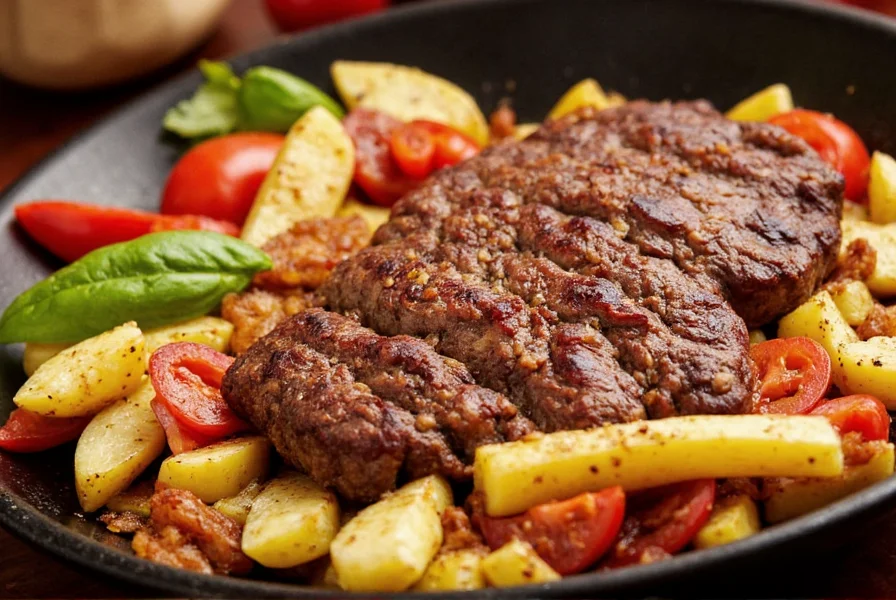
Fajitas beef may start simple, but with the right spice knowledge and technique, you can transform it into a culinary masterpiece. Whether you're impressing guests or spicing up a weeknight dinner, remember that flavor is built in layers — from cut selection to marination, spice application, and that final sizzling sear.
Now grab your skillet, your favorite spices, and let those beef strips hit that hot pan with a satisfying hiss. Because when it comes to fajitas, the sizzle isn't just sound — it's soul.
Frequently Asked Questions About Fajitas Beef
What is the best cut of beef for fajitas?
Skirt steak is traditionally considered the best cut for fajitas due to its rich marbling and ability to absorb flavors. Flank steak, flat iron steak, and hanger steak are excellent alternatives that also work well for fajitas.
How long should I marinate fajita beef?
For optimal results, marinate your fajita beef for at least 30 minutes to allow the flavors to penetrate. However, marinating overnight (8-12 hours) will yield even more tender and flavorful results. Avoid marinating for longer than 24 hours as the acid in the marinade can start to break down the meat too much.
What's the difference between fajitas and regular grilled beef?
Fajitas specifically refer to grilled meat (traditionally skirt steak) that's sliced and served with grilled peppers and onions, typically wrapped in a warm tortilla. The key differences are the specific cut of meat used, the distinctive spice blend, and the preparation method that includes high-heat searing and serving with traditional accompaniments.
Can I make fajitas beef without a cast iron skillet?
Yes, while a cast iron skillet is ideal for achieving that signature char and sear, you can use a heavy-bottomed stainless steel pan or even grill the meat. The key is using a cooking surface that can get very hot and maintain that heat for proper searing.
How do I prevent my fajita beef from becoming tough?
To prevent tough fajita beef: 1) Choose the right cut (skirt, flank, or hanger steak), 2) Don't skip the marinating step (at least 30 minutes), 3) Slice against the grain when serving, 4) Don't overcook - aim for medium-rare to medium, 5) Let the meat rest for 5-10 minutes after cooking before slicing.
What temperature should I cook fajita beef to?
For the best texture and flavor, cook fajita beef to medium-rare (130-135°F internal temperature) or medium (140-145°F). Since the meat is sliced thin, it cooks very quickly - usually 1-2 minutes per side on a very hot skillet. Remember that the meat will continue to cook slightly while resting.
Can I use chicken instead of beef for fajitas?
Absolutely! Chicken fajitas are extremely popular. Use boneless, skinless chicken breasts or thighs, sliced against the grain into thin strips. The marinade and spice blend remain largely the same, though you may want to reduce the cooking time since chicken cooks faster than beef.
What sides go well with fajitas beef?
Traditional sides for fajitas beef include warm flour or corn tortillas, guacamole, pico de gallo, sour cream, shredded cheese, refried beans, Mexican rice, and grilled peppers and onions. A simple green salad with lime vinaigrette also complements the rich flavors well.

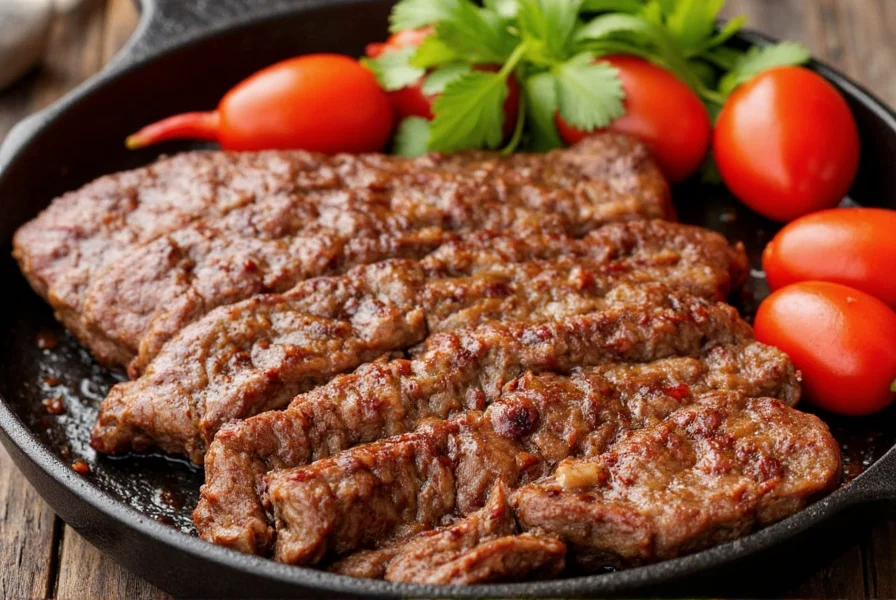









 浙公网安备
33010002000092号
浙公网安备
33010002000092号 浙B2-20120091-4
浙B2-20120091-4